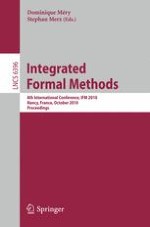2010 | Buch
Integrated Formal Methods
8th International Conference, IFM 2010, Nancy, France, October 11-14, 2010. Proceedings
herausgegeben von: Dominique Méry, Stephan Merz
Verlag: Springer Berlin Heidelberg
Buchreihe : Lecture Notes in Computer Science
